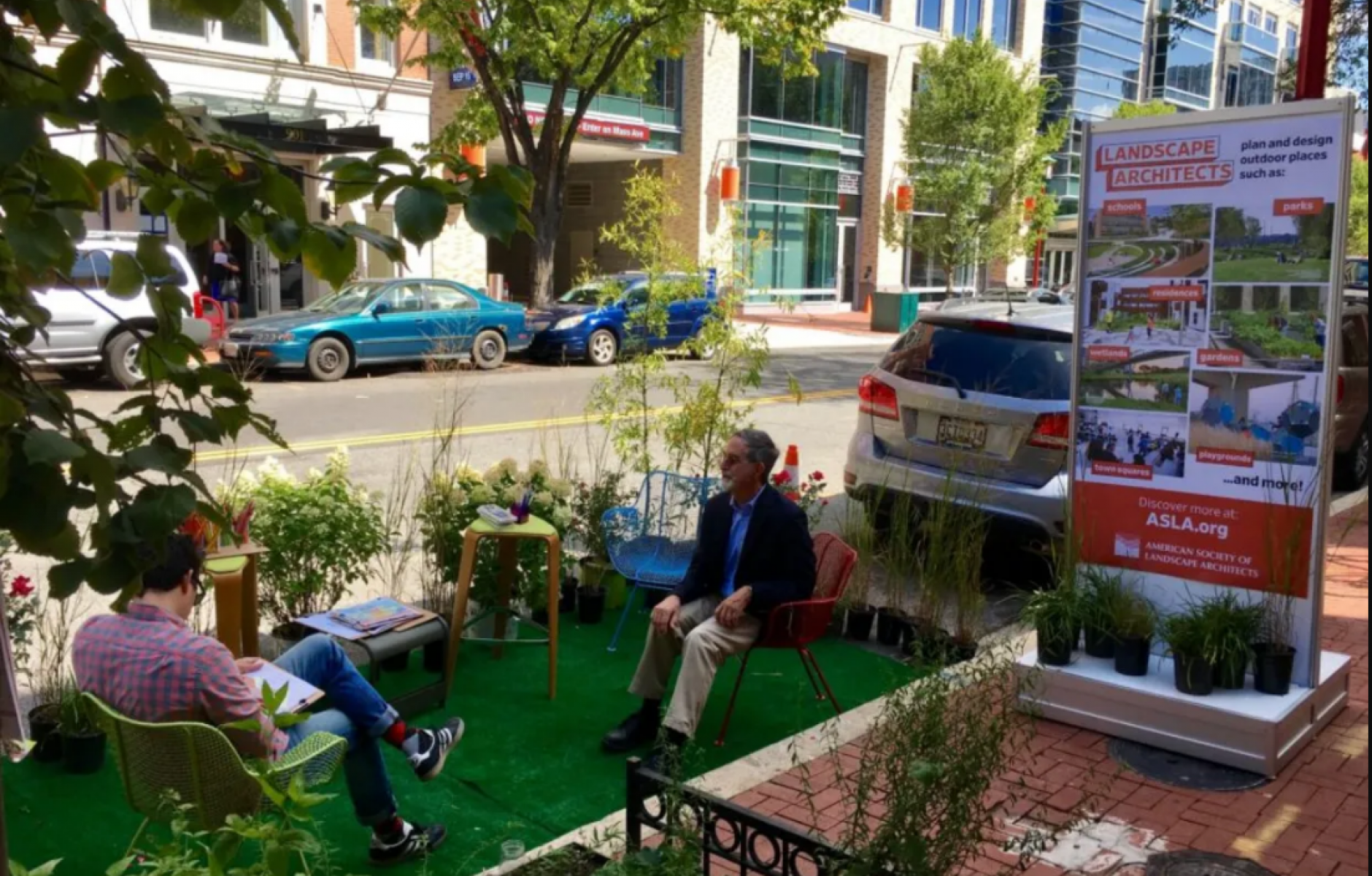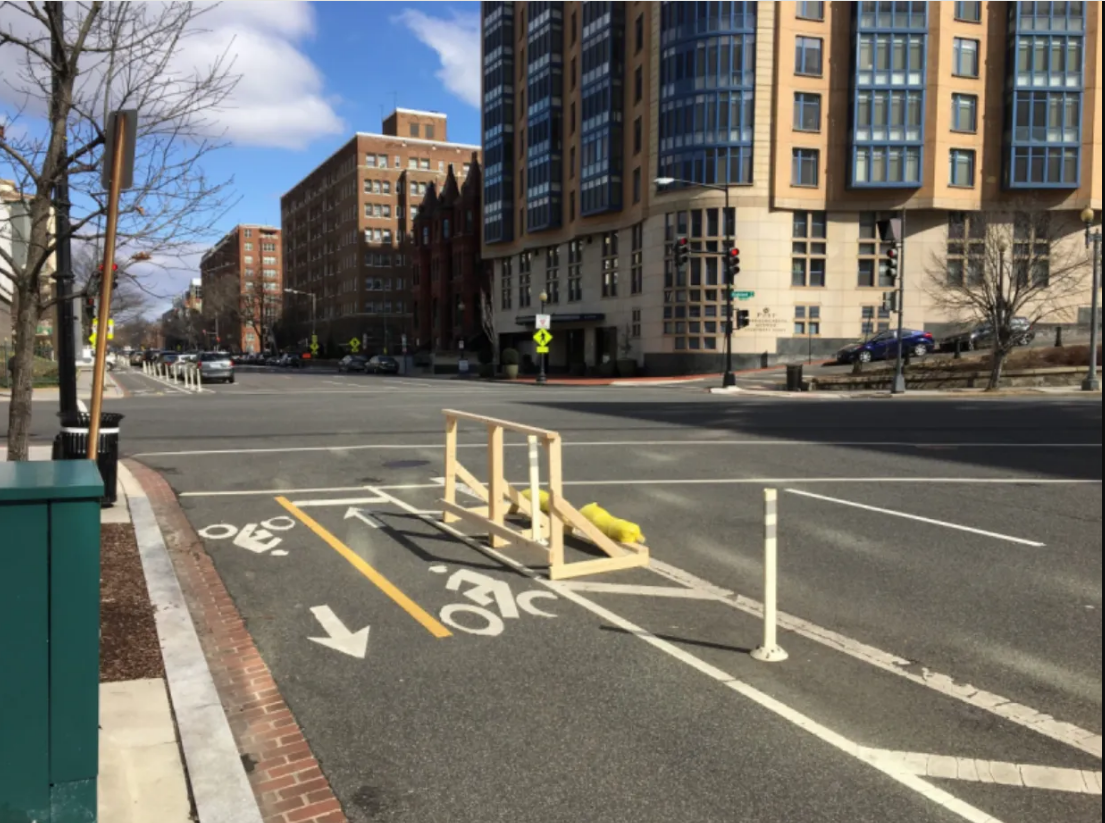
Activation and intervention: two sides of the Tactical Urbanism coin
A few months ago, I finished reading Lydon and Garcia’s Tactical Urbanism. Living in Washington DC, I was enthralled to see how my city had pursued tactical urbanism and observe the community-led initiatives that blossom from it.
The book defines Tactical Urbanism as “an approach to neighborhood building and activation using short-term, low-cost, and scalable interventions and policies” (Lydon, Garcia 2, emphasis added.) Often, these initiatives arise as a response to the shortcomings of traditional city planning. Examples of these include temporary bike lanes and pop-up parks in vacant lots.
As I began exploring initiatives that could be considered Tactical Urbanism, I focused on two contrasting yet relevant examples. In one case, a public park space was utilized by a local jiu jitsu gym to host open mats. In another case, a social media account highlighted the shortcomings of the city's infrastructure design and provided small-scale, low-cost improvements solely produced by the community. Between the two cases, we see Tactical Urbanism through two lenses—as an activation method, and as an intervention. In other words, it can cater to a unique community need or fill a gap in city planning. Analyzing these contradictions led me to question: Is there an opportunity in city and urban planning to allow for Tactical Urbanism to happen more organically?
Let us look deeper at those examples.
1. Activation: Vortex Jiu Jitsu—Open Mats at the Park
The first example employs Tactical Urbanism for activation and customization. A local DC jiu jitsu gym (@vortexjiujitsu on instagram) has been holding “Open Mats at the Park,” in which mats are brought from their gym in Logan Circle to Meridian Hill Park and anyone may train in jiu jitsu free of charge. This is not your typical Tactical Urbanism, which calls to mind improvements to the community such as creation of public spaces with underutilized land. I like to think of this as a form of “specialized” Tactical Urbanism. A communal group activates a public space with a specialized use for the local community to benefit from. If we remember the definition of Tactical Urbanism, this example embodies its psyche. It is a community driven, low-cost, and scalable initiative that allows people to train jiu jitsu in a public open space. With that, I believe this instance of Tactical Urbanism is a direct product of the urban environment around it. And this comes back to my question. By having access to a large open green space, community members are able to reap the benefits and create their own instances of Tactical Urbanism that do not need to respond to the shortcomings of the built environment but complement the spaces created by it.

I’m not suggesting that simply building a park solves all problems, but this example provides a base point for thinking about how we can design our cities, neighborhoods, and urban policies to allow organic growth and adaptation through these community-driven urban interventions.
2. Intervention: DC Department of Transformation
This example focuses on Tactical Urbanism as an intervention and improvement of the existing public realm. The DC Department of Transformation (@DCDOTRA on X) is a pedestrian-oriented tactical urbanist group that focuses on improving public spaces and streets for people. Operating mostly during and post-pandemic from 2020-2021, the group led many community-run initiatives to enhance the public realm. Some initiatives aim to improve comfort, such as wooden handstands for bikers to rest at intersections, or street buffers with traffic cones and broomsticks. In contrast with our first example, these interventions highlight the shortcomings of city planning and engineering and aim to improve them.

This group has done a great job at empowering the local community to come together and create a safer, healthier city. It also highlights the problems, safety hazards, and car-oriented aspects of the city and brings them to light, pushing local governments to improve the community's well-being.
Learning from Activation & Intervention
Both examples highlight different aspects of Tactical Urbanism that respond to the built environment in contrasting ways—Activation and Intervention. For context, let us refer back to the definition. “An approach to neighborhood building and activation using short-term, low-cost, and scalable interventions and policies.” The Vortex Jiu Jitsu initiative demonstrates how healthy urban planning practices can allow for locals to activate the public realm with organic, community-driven activities. DCDOTRA’s efforts showcase Tactical Urbanism as an intervention to the limitations of current urban planning. Together, they suggest that with thoughtful design and community engagement, cities can foster environments where tactical urbanism not only addresses urban issues but also enhances the quality of life by leveraging and complementing existing spaces.
Although we have seen these tactical urban successes, we are left with a few questions about how to enable future successes. Is there a way that urban planners, city planners, policy makers, etc. can empower their communities and give them the freedom and platform to create these urban improvements more organically? Can a community become closer, and create a stronger culture and individuality through this? These are questions that need to be asked when thinking about Tactical Urbanism as a whole.
Note: This article first appeared in The ENU Exchange, a newsletter written by Emerging New Urbanist members about topics and debates within the movement. Subscribe to the newsletter.




